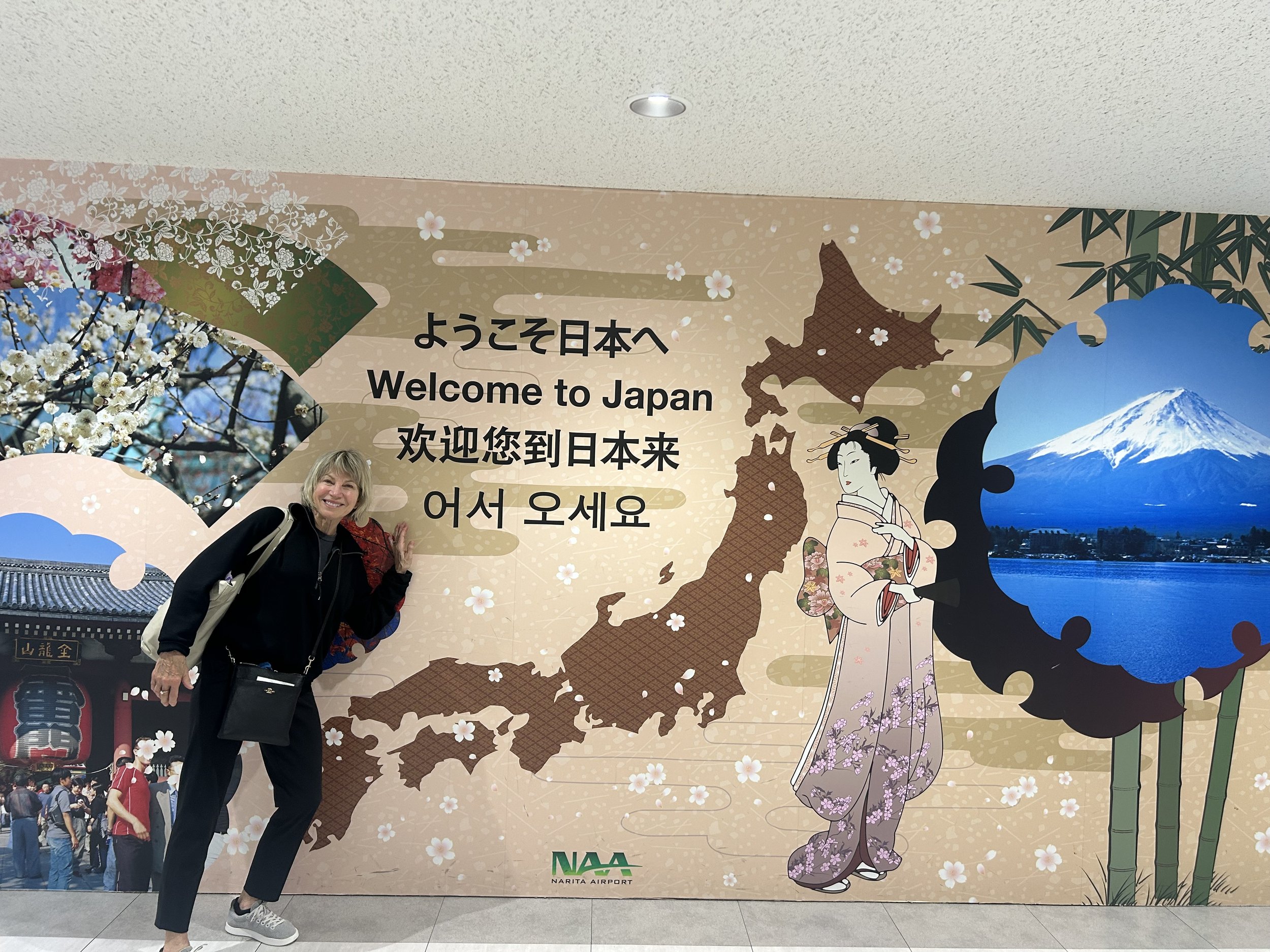Tour of Kyushu 2025
Arrival in Tokyo: A Seamless Start to Our Japanese Journey
After landing at Tokyo Airport around 6:30 PM, we quickly navigated customs, complete with a temperature check and made our way to a service counter to ship our bikes ahead to Nagasaki, where the core of our journey will begin in four days. With logistics handled, we hopped onto Tokyo’s famously efficient train and subway system for a smooth hour-long ride into the city. A short walk later, we arrived at our hotel and checked into our cozy 10-square-metre room. By 10:00 PM, we were fast asleep, ready for the adventure ahead.
Day 1: Pedaling Through Tokyo’s Cultural Backstreets
Our first full day began with a traditional Japanese breakfast featuring rice, pickled vegetables, fish, and a soft-boiled egg, a curious but satisfying mix. We met up with friends Meg and Simon, then took the subway to meet Andy, our guide for the Tokyo Westside Cycling and Food Tour.
Our mode of transport for the day was a refurbished mamachari a classic, utilitarian Japanese bicycle. With Andy’s deep local knowledge, we explored the vibrant neighbourhoods of Nakano, Koenji, and Asagaya. We cycled and walked through narrow laneways, picturesque paths along the Zenpukuji River, and urban pockets brimming with character.
The tour offered a multisensory experience: sampling local snacks, navigating Japan’s intricate bike parking systems, and enjoying lunch elbow-to-elbow with Tokyo’s famously busy 'salarymen.' Every turn introduced us to something unique, be it a hidden food stall, quirky vintage store, or street art that gave each district its distinctive flavour.
In the afternoon, we visited Knife/Kitchen Street, a haven for culinary enthusiasts, before heading back to the hotel for an early dinner and much needed rest.
Day 2: Tokyo’s Historic and Modern Icons
We began our day with a tranquil visit to nearby shrines and temples, followed by breakfast back at the hotel. Our itinerary took us next to the Imperial Gardens, a serene escape in the heart of Tokyo.
After soaking in the greenery, we descended into the Tokyo Subway—famed as the world’s largest—and later emerged into the buzzing energy of Shibuya Square. We stopped to see the iconic Hachikō statue and met up with an old friend from high school.
As evening fell, we headed to Chinatown for a relaxing drink, then wrapped up the day by taking in sweeping night views of Tokyo from the Ashiki Building. The city glowed beneath us—an unforgettable sight.
Day 3: A Solemn Shift—Nagasaki’s Story
An early flight took us to Nagasaki, where we checked into Nissholan Shinkan Baishokaku, our hotel perched on a scenic hillside. Our first stop was the Nagasaki Atomic Bomb Museum and Peace Park. The gravity of the events of August 9, 1945, when an atomic bomb devastated the city was profoundly moving. The museum offers a sobering, respectful account of the immense human cost and enduring resilience of the survivors.
Later, we visited Dejima, a small, fan-shaped artificial island that once served as Japan’s only gateway to the Western world during centuries of national isolation (1641–1859). Today, it stands as a living museum, highlighting Japan’s unique historical engagement with Dutch traders and Western knowledge.
Day 4: Exploring Nagasaki’s Spiritual and Historical Legacy
Our journey today began at the Twenty-Six Martyrs Museum in Nagasaki, a solemn tribute to twenty-six Christians who were executed in 1597. At a time when missionary work was strictly forbidden, this public execution was staged as a stark warning by Japan’s ruling powers. The museum offers a moving reflection on this historical moment and the lives it affected.
From the memorial, we continued to Tera Machi Temple Street, one of Nagasaki's most iconic cultural corridors. The name "Tera-machi" translates to "Temple Town"a fitting title for this area, which lies at the heart of the city and is steeped in spiritual history. The street is bookended by two of Nagasaki's most renowned temples, Sōfuku-ji and Kōfuku-ji. Both temples have Chinese roots and are central landmarks within the city’s Central Business District.
Spanning approximately 600 meters, the path between these temples is lined with smaller, lesser-known temples, each offering its own distinct charm. Many contain historic grave sites and intricately crafted statues that reflect the depth of Nagasaki’s religious heritage. Every turn reveals something new, be it a hidden sculpture, a peaceful garden, or an atmospheric shrine.
Whether you're a history enthusiast, a spiritual seeker, or simply a curious traveler, Tera Machi Temple Street is full of quiet surprises. Just be prepared: the presence of ancient tombstones and weathered gravestones adds a haunting, yet humbling, layer to the experience.
Reflections prior to ride:
As we continue to explore, one thing becomes strikingly clear: Japan is immaculate. Streets are spotless, trains run like clockwork, and the nation’s public infrastructure functions with the precision of a Swiss watch. More than that, the culture here is rooted in respect, harmony, and timeless tradition. This journey is proving to be not only a feast for the senses but also a meaningful cultural immersion, one that’s just beginning.
Sayonara,
Matt and Linda










